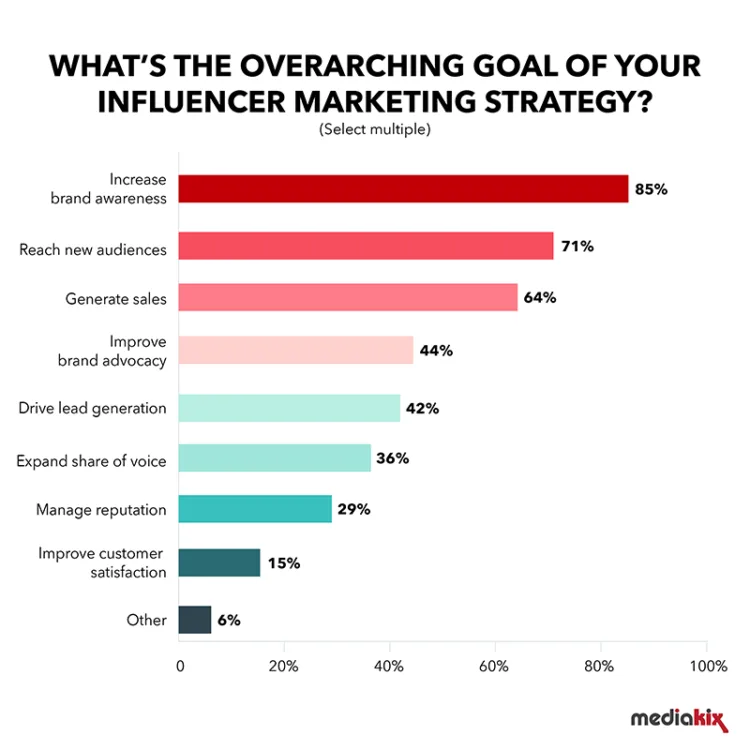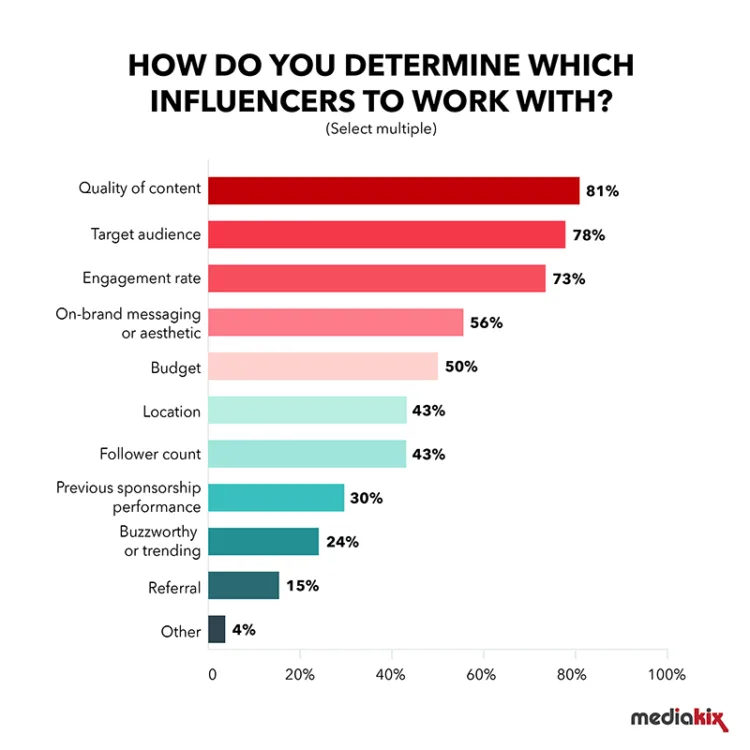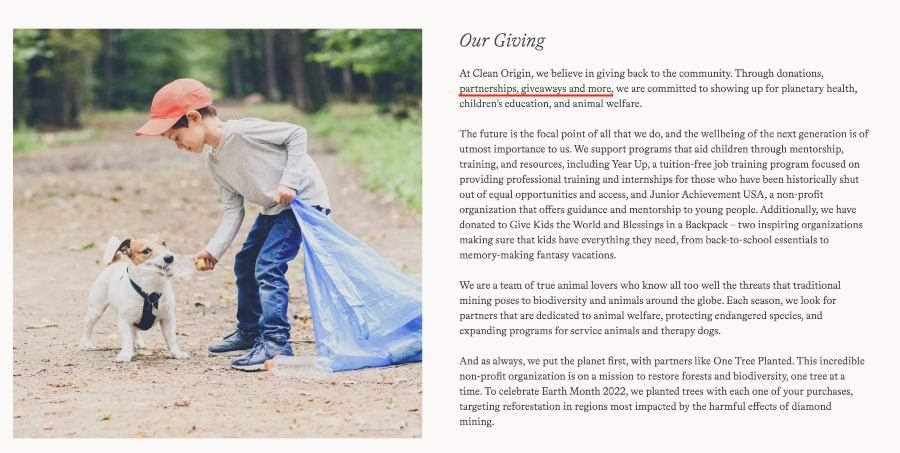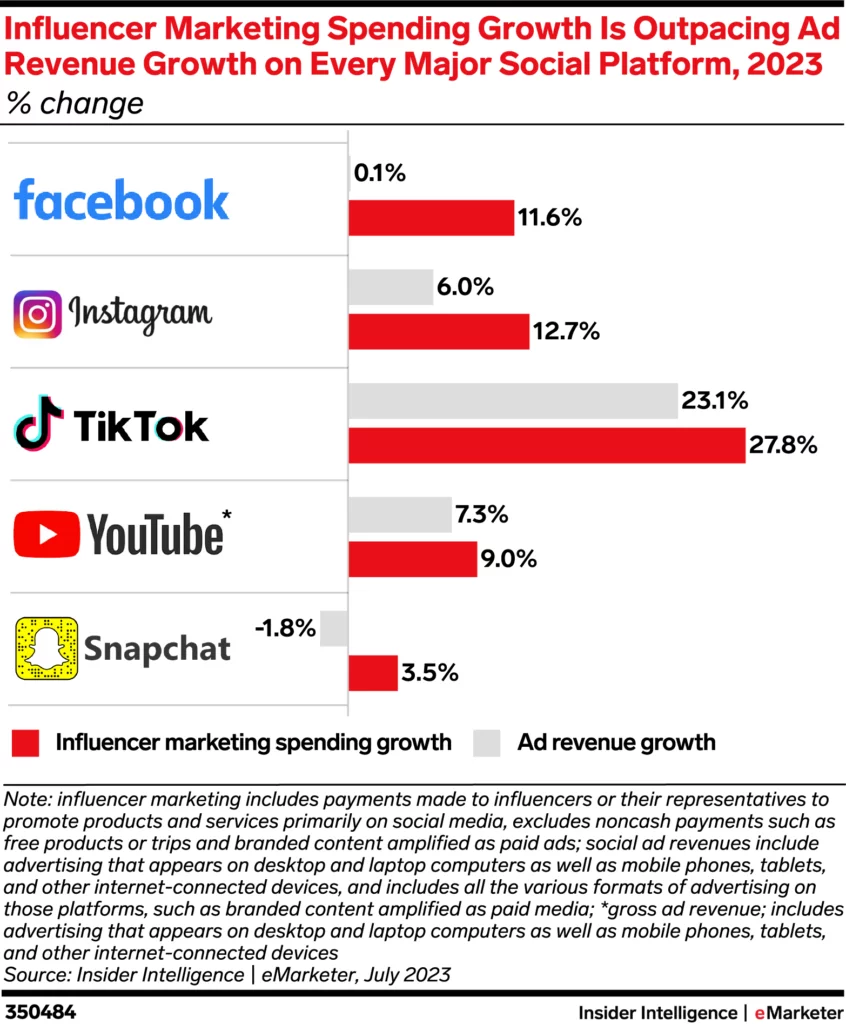In recent times, influencer marketing has become a prominent and favored strategy for brands seeking to establish connections with their target audiences while elevating brand awareness. This approach facilitates the authentic and cost-effective promotion of products or services, creating an avenue for brands to gain visibility and cultivate a sense of community and shared experiences that resonate with consumers.

Despite its numerous advantages, influencer marketing campaigns can pose challenges that, if not addressed strategically, may lead to negative repercussions, potentially tarnishing a brand’s reputation. In this comprehensive article, we will explore the prevalent challenges associated with influencer marketing and provide actionable insights to empower brands in navigating this dynamic landscape effectively. By understanding and proactively addressing these challenges, businesses can maximize the benefits of influencer marketing while mitigating the risks, ensuring a positive impact on brand perception and consumer engagement.
Challenges to Effective Influencer Marketing:
Challenge 1: Identifying the Appropriate Target Audience

Executing influencer marketing campaigns demands substantial investments of time and resources. This involves various steps, from carefully selecting influencers to crafting compelling campaign content and meticulously tracking outcomes. The effectiveness of this investment is significantly compromised when the chosen influencers do not align with the intended target audience. Given the high costs associated with Instagram ads and current influencer rates, it is crucial to select the most suitable influencers from the outset.
Failure to align with the right target audience can lead to detrimental outcomes for both the brand and the influencer involved. If an influencer promotes products or services that are incongruent or unappealing to their followers, it can trigger negative feedback, resulting in damage to their reputation. Simultaneously, the brand may face criticism for partnering with an influencer whose audience does not align well with its product or service.
How to Overcome It:
- Define Influencer’s Target Audience:
Clearly outline and understand the influencer’s target audience to ensure resonance with the right demographic, maximizing the campaign’s impact. - Steps to Identify and Understand Influencer’s Target Audience:
- Analyze Social Media Data: Leverage analytics tools to study the influencer’s audience demographics, interests, and engagement patterns.
- Conduct Market Research: Understand your target audience’s demographics, interests, challenges, and online behaviors.
- Compare Audiences: Align the influencer’s audience profile with your target audience to identify similarities and potential gaps.
- Ensure Compatibility: Verify that the influencer’s audience aligns with your goals, values, and brand message.
- Refine Criteria: Based on audience analysis, refine influencer selection criteria to prioritize those with a close target market fit.
- Track Performance: Monitor campaign performance and audience engagement to gauge the effectiveness of connecting with the influencer’s target audience.
Real-Life Example:
For instance, if a gaming brand like YUPLAY aims to promote itself, partnering with the right influencers is essential. YUPLAY could collaborate with top Fortnite streamers on Twitch to endorse the “Fortnite Batman Who Laughs” outfit. These gaming influencers, with their expertise, substantial following, and extensive viewer hours, could assist YUPLAY in reaching a broader audience and generating excitement for the new outfit. This strategic alignment ensures the campaign resonates effectively with the target gaming audience, maximizing its impact.

Challenge 2: Choosing the Right Content Creators
Selecting the right influencer is pivotal for amplifying your brand message, expanding your reach, and achieving positive outcomes. However, for brands, especially those in niche markets like the RV industry, the process of choosing the right content creator can be intricate. While influencer marketing holds immense potential, misguided choices can cast a long shadow of negative publicity.

Take, for example, Cruise America, a brand looking to attract buyers for new and used RVs. A poorly executed influencer campaign in this niche market could lead to brand damage. Brands must navigate the influencer landscape with caution, ensuring that the influencers selected align well with their brand identity.
For a brand like Cruise America, partnering with channels like “Keep Your Daydream” and “RV Love,” known for authentic content and firsthand experiences, proves effective in resonating with their target audience.
Understanding the different types of influencers and their strengths and limitations is essential in making informed decisions:
Types of Influencers:
- Nano Influencers: With a small audience (a few hundred to a few thousand followers), nano influencers lack broad reach but often have highly engaged and loyal followers, making their recommendations authentic and impactful.
- Micro-Influencers: With slightly larger audiences (1,000 to 100,000 followers), micro-influencers command higher trust and reputation within their communities, proving valuable for brands targeting specific audiences.
- Mid-Level Influencers: Typically having between 100,000 and 500,000 followers, mid-level influencers have a widespread presence and are considered experts in their field, making them valuable for campaigns with a broader target.
- Macro Influencers: With followers ranging from 500,000 to several million, macro influencers can reach large audiences, suitable for brands seeking widespread awareness. However, their engagement may be slightly lower.
- Mega/Celebrity Influencers: With millions or even tens of millions of followers, mega influencers have a wide reach, creating global visibility for a brand. However, their authenticity and engagement can be lower, and their cost is often higher.
Overcoming the Challenge:
Partnering with influencers can be a powerful marketing strategy, but meticulous research is crucial. Thorough influencer research ensures alignment with brand values, target audience, and overall marketing goals. Key considerations include:
- Audience Demographics: Choose influencers whose followers match your target audience to ensure your message reaches the right people.
- Engagement Rate: Evaluate an influencer’s engagement rate to gauge an active and responsive audience.
- Authenticity: Assess an influencer’s authenticity and connection to their followers. Are they genuinely engaging and promoting products they believe in?
- Experience with Branded Content: Assess their experience in creating branded content and previous collaborations with brands.
For example, brands like Hims conduct in-depth research to ensure influencers align with brand values, have a relevant audience, comply with regulations, and maintain a positive reputation. This strategic approach safeguards the brand’s reputation and ensures influencer marketing efforts align with the overall brand strategy.
Thrilled to share a couple of highlights from our Q1 2023 earnings call.
— hims (@wearehims) May 9, 2023
✅ Revenue of $190.8 million, up 88% year-over-year in Q1 2023
✅ Subscribers grew to over 1.2 million, up 87% year-over-year in Q1 2023
Check out the full release here: https://t.co/wCBgr4VZ7z pic.twitter.com/8bqcAiLaok
As seen with Hims, they carefully select influencers like Alex Rodriguez, ensuring a perfect match between the influencer and the brand’s values, resulting in impactful and authentic promotions.
Challenge 3: Collaboration with Controversial Content Creators
Engaging controversial content creators in influencer marketing can be a double-edged sword, presenting both advantages and risks to campaigns. While it may create a buzz, attract attention, and stimulate conversations, it also poses the risk of tarnishing your brand’s reputation and alienating potential customers.
Risks Involved:
- Brand Reputation: Partnering with controversial creators risks associating your brand with views or behaviors that may not align with your audience.
- Customer Alienation: A mismatch in values may lead to backlash, as consumers might perceive your brand as endorsing controversial content.
Mitigating the Challenge:
To overcome this challenge, it’s crucial to partner with influencers who share your brand’s values and mission. This alignment fosters a genuine and trustworthy image among the audience.

Real-Life Example: StudioSuits
Consider StudioSuits, a brand specializing in high-quality wedding suits for men. They exemplify this approach by collaborating with photographers who share their passion for capturing the essence of a wedding day. These influencers showcase groomsmen dressed impeccably in StudioSuits’ attire, reinforcing the brand’s commitment to weddings and joy. This harmonious relationship ensures a genuine portrayal, vital for building trust and solidifying reputation in influencer marketing.
Another Exemplary Case: Clean Origin
Clean Origin, a brand emphasizing lab-grown diamonds in their jewelry, prioritizes collaboration with creators who share their values. This alignment ensures consistent and authentic storytelling, amplifying the brand’s message and reinforcing trust and transparency.

Creators associated with Clean Origin communicate the brand’s mission, educate consumers about lab-grown diamonds, and reach a wider audience. Through these partnerships, Clean Origin strengthens its commitment to sustainable and ethical jewelry, establishing a powerful connection with its audience through influencers who align with its values. This strategic collaboration ensures that the brand’s message is conveyed genuinely and effectively.
Learn about influencer marketing strategies here.
Challenge 4: Defining Clear Objectives
Setting clear goals is pivotal for the success of any marketing campaign, and this holds true for influencer marketing, especially when aiming to boost event registrations.
Importance of Clear Objectives:
- Resource Optimization: Without defined goals, there’s a risk of allocating resources to campaigns lacking direction, leading to ineffective partnerships and a poor ROI.
- Assessment and Decision-Making: Clear objectives are essential for evaluating campaign effectiveness and making informed decisions for future partnerships.
- Alignment and Transparency: Lack of goals can result in misunderstandings and misaligned expectations between brands and influencers, potentially leading to disappointing outcomes.
How to Overcome It:
To navigate this challenge, it’s crucial to establish clear, SMART goals for your influencer marketing campaign:
SMART Goals:
- Specific: Clearly define campaign objectives.
- Measurable: Establish metrics to track progress.
- Achievable: Set realistic and attainable goals.
- Relevant: Align goals with overall business objectives.
- Time-Bound: Set deadlines for goal achievement.
Benefits of Clear Goal-Setting:
- Efforts Alignment: Ensure all activities contribute to the desired outcome.
- Transparent Partnerships: Clearly communicate expectations and success metrics with influencers and agencies.
- Continuous Evaluation: Track progress and make necessary adjustments to optimize performance.
Setting clear goals not only provides direction but also fosters transparency, aligns efforts, and facilitates ongoing evaluation for a more effective and purpose-driven influencer marketing campaign.
Challenge 5: Balancing Engagement and Content Quality
Striking the right balance between prioritizing engagement and maintaining content quality is a critical factor in ensuring effective campaigns and safeguarding your brand’s reputation.

Significance of Quality Content:
- Branding Impact: Quality content is foundational for effective branding, emphasizing the need for authentic and valuable messaging.
- Connection with Audience: The focus is on connecting with the audience through meaningful content, transcending elaborate productions.
- https://www.richterstudios.com/video-production/brand-films/
Effective Strategies for Quality Content:
- Branded Videos: Create compelling branded videos for authentic communication, leveraging the influence of suitable personalities to connect directly with the target audience.
- Positive Engagement: Authentic video content fosters positive engagement, presenting your brand in a genuine and relatable light.
Pitfalls of Prioritizing Engagement Alone:
- Superficial Perception: Poor-quality content, despite high engagement rates, may be perceived as superficial, misleading, or damaging to the brand’s image.
How to Overcome It:
- Define Clear Objectives: Establish clear campaign objectives to guide strategy, enabling data-driven decisions and optimization for maximum impact.
- Diverse Tracking Methods: Employ various tracking methods, such as unique hashtags, personalized tracking links, or discount codes, to accurately assess engagement, reach, and conversions.
- Media Monitoring Tools: Utilize media monitoring tools like Brand24, Meltwater, or Sprout Social for real-time mentions, sentiment analysis, and comprehensive campaign performance insights.
- Respectful Monitoring: Avoid micromanaging influencers; instead, respect their expertise and creative vision. Allow them the freedom to authentically connect with their audience.
Achieving a harmonious balance between engagement and content quality involves strategic goal-setting, diverse tracking methods, and respectful monitoring of influencers. This approach ensures meaningful connections with the audience while upholding the integrity of the brand.
Challenge 6: Balancing Long-Term vs. Short-Term Influencer Relationships
The decision between cultivating enduring relationships with content creators and engaging in one-time collaborations poses a critical choice in influencer marketing. While building lasting connections demands time and effort, severing ties post-campaign is a prevalent yet costly mistake, straining relationships and complicating future partnerships.
Importance of Long-Term Relationships:
- Strategic Partnerships: View influencers as strategic partners with direct access to your target audience, contributing significantly to achieving marketing goals.
- Ongoing Collaboration: Nurturing enduring relationships with influencers is paramount for sustained success in influencer marketing.
Overcoming the Challenge:
- Continuous Engagement: Foster relationships with influencers beyond specific campaigns, ensuring regular communication to maintain top-of-mind awareness.
- Appreciation and Trust: Sustain ongoing engagement to instill a sense of appreciation and trust, enhancing the likelihood of future collaborations.
- Benefits of Regular Communication:
- Understanding the influencer’s perspective on brand perception.
- Gaining valuable feedback and insights.
- Evaluating campaign performance and identifying areas for improvement.
Challenge 7: Fostering Meaningful Engagement with Your Followers

Engaging with followers may seem like a never-ending task, but neglecting this aspect poses a significant challenge in influencer marketing. Beyond merely broadcasting messages to a wide audience, influencer partnerships thrive on building relationships and establishing authentic connections with potential customers.
Importance of Engagement:
- Cultivating Relationships: Influencer marketing goes beyond broadcasting messages; it involves cultivating relationships and connecting genuinely with potential customers.
- Untapped Potential: Failure to interact with followers engaging with an influencer’s content overlooks potential customers already expressing interest in your product or service.
Overcoming the Challenge:
- Respond and Interact: Address comments, concerns, and questions to transform intrigued individuals into paying customers.
- Gain Insights: Engaging with followers provides valuable insights into their preferences, opinions, and sentiments.
- Build Brand Loyalty: Proactive interaction on social media platforms fosters a devoted and engaged following, a cornerstone of influencer marketing success.
Engagement Strategies:
- Interactive Content: Utilize features like polls, Q&A sessions, and other interactive elements to encourage active participation.
- Responsive Interaction: Respond to comments, messages, and mentions promptly to create a dynamic and responsive online presence.
Challenge 8: Accurate Measurement of Campaign Results
Effectively measuring the outcomes of influencer marketing campaigns is paramount for informed decision-making in future endeavors. The key lies in selecting the right Key Performance Indicators (KPIs) and diligently tracking the performance of influencer partnerships. One common pitfall is neglecting analytics and becoming overwhelmed by the need to monitor multiple content creators simultaneously.
Importance of Correct Measurement:
- Informed Decisions: Accurate measurement is crucial for making informed decisions regarding the success of influencer marketing campaigns.
- Avoiding Overwhelm: Neglecting measurement strategies or attempting to track numerous content creators simultaneously can lead to confusion and ineffectiveness.
Effective Tracking Methods:
- UTM Parameters: Utilize UTM parameters to track website visitors and engagement. These dynamic tags, when added to URLs, provide insights into campaign traffic, user behavior, and valuable data like visitor demographics.

Setting Clear Goals and KPIs:
- Define Clear Objectives: Establish clear goals and KPIs aligned with overall marketing objectives before launching an influencer marketing campaign.
- Example Goals: Goals may include enhancing social media engagement, increasing brand awareness, generating website traffic, or driving sales.
Overcoming the Challenge:
- Metrics to Define:
- Engagement: Measure likes, comments, shares, and backlinks to assess message resonance with the target audience.
- Brand Awareness: Evaluate brand recognition impact through mentions, impressions, and sentiment analysis.
- Follower Growth: Track social channel follower counts during and post-campaign to gauge influencer effectiveness in attracting potential customers.
- Inbound Leads: Quantify qualified leads generated, reflecting influencer marketing’s conversion and business growth potential.
- Choose Metrics Based on Goals: Tailor metrics selection to your specific campaign objectives, prioritizing metrics like impressions and sentiment analysis for brand awareness, and leads and conversion rates for lead generation.
- Utilize Analytics Software: Employ marketing analytics software for efficient tracking, comprehensive analysis, and gaining insights into influencer marketing campaign performance with minimal effort.
Conclusion:
In conclusion, influencer marketing is a dynamic and powerful strategy that allows brands to connect with their target audience through authentic and engaging content. However, it comes with its own set of challenges that require careful navigation. From identifying the right influencers to ensuring transparency and measuring ROI, brands need to address these challenges to make the most of their influencer marketing campaigns. By being aware of these hurdles and implementing strategies to overcome them, businesses can leverage the full potential of influencer marketing to build brand awareness, drive engagement, and ultimately boost their bottom line.
FAQs on Influencer Marketing Challenges:
What legal considerations should brands be aware of in influencer marketing?
Brands need to ensure influencers disclose partnerships, adhere to copyright laws, and comply with advertising regulations. Clear contracts outlining expectations, deliverables, and usage rights are essential.
How can brands overcome the challenge of fake followers and engagement?
Brands can use tools to audit influencer accounts, analyzing follower growth patterns and engagement metrics. Collaborating with micro-influencers with a highly engaged audience can also mitigate the risk of fake followers.
What strategies can be employed to overcome the saturation of influencer marketing in certain niches?
Brands can focus on niche-specific micro-influencers, explore new and emerging platforms, and differentiate their campaigns through unique and creative approaches to stand out in saturated markets.



